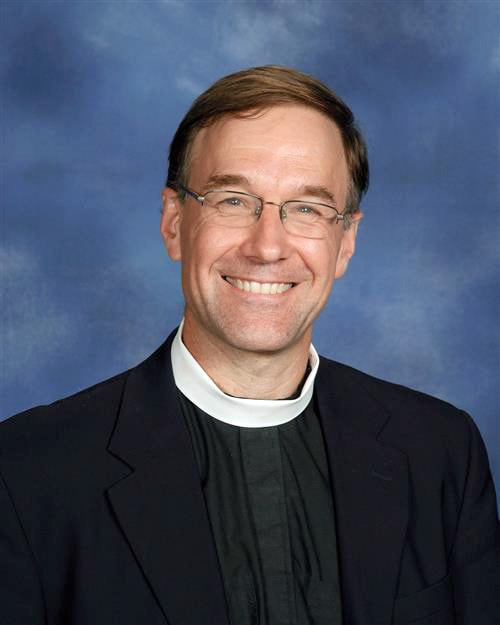|
I start with the obvious. Easter morning is fabulous. I’ve always loved it.
When I was a child, Easter Sunday meant egg hunts and lots of goodies. That was awesome. Things didn’t change all that much for me as a young adult. I got in the habit of attending a sunrise service wearing a bright green blazer like I had won the Masters. I chose the early service partly out of genuine religious commitment. But I also arrived with pockets stuffed with chocolate. I figured, Lent ended as soon as the service began, and I wanted to break my chocolate fast as early as possible. I still enjoy Easter gluttony. But I am happy to report that I focus more these days on the true good news of Easter, the real reason for Easter joy. Christ died, and rose again. Christ died and, in dying, Christ defeated death for all of us. Christ has been raised from the dead, first fruits of the resurrection, opening the way for us, too, to experience resurrection. Christ is risen. Christ is alive. Christ is with us now, and always, and for eternity. For that Easter good news, thanks be to God! Say it with me! Alleluia, alleluia! That is the good news of this day. It’s the good news of every day, but especially it’s the good news of Easter morning. Now, many of us have heard that good news all our lives. There are lots of great Gospel stories about Christ’s resurrection. Jesus appears to Mary Magdalene and calls her by name. Jesus appears to the discouraged disciples on the road to Emmaus in the breaking of the bread. Jesus appears to the frightened disciples in the upper room. Twice! And the second time, Jesus lets doubting Thomas touch his wounds. Come back next Sunday for that one. Jesus appears to a handful of disciples while they were fishing, and cooks breakfast for them. There are more resurrection stories, too, although we’re not told as much about them. The Apostle Paul lists a handful of resurrection appearances that aren’t mentioned anywhere else (1 Corinthians 15:3-8). The Apostle John says his Gospel couldn’t possibly contain all the stories about our risen Lord (20:30; 21:25). We may not know all the stories, but we know about Christ’s resurrection. That’s why we’re here this morning. But then, sometimes, it’s like we don’t know. It’s not that we forget Jesus rose from the dead two thousand years ago. But we can’t always hold on to what Christ’s resurrection means for us, today, in our world, with all the badness in the world. Sometimes it seems almost like Christ’s resurrection didn’t happen, like death does have the last word after all. So, once again this morning, we go to the tomb with the women on that first Easter. By the time the women got to the tomb, Jesus had already risen. But the women didn’t know it. The women didn’t go to the tomb to meet their risen Lord. The women went to the tomb that morning to care for Jesus’ dead body. As far as Mary Magdalene and the others were concerned, Jesus was dead, and Jesus was going to stay dead. That morning, they assumed death had the last word. But as we know, the women didn’t find a dead body. The women found an empty tomb. The women found an empty tomb and a pair of angels who told them “He is not here, but has risen.” We often rush on to the end of the story, to one of those resurrection appearances we know about. We will get to them over the next several weeks, as we work through the Easter season. But today, we linger at the empty tomb. By ending the reading for this morning where it does, with the tomb empty but no sight of Jesus yet, the Church invites us to slow down, to spend some time with the grieving, frightened, perplexed, courageous, faithful women at Jesus’ empty tomb, to spend some time with people who fear death is the end of the story even while they are looking at an empty tomb. It may seem strange to linger at the empty tomb today. It’s Easter! But the good news of Easter is not just for this morning. The good news of Easter is for every day, including the days when the Church may not be quite so full, and the music may not be quite so joyful, and we may not get to eat whatever we want at least not guilt free, and things may not seem all that great in the world. Our reading for this morning speaks to those days too. And sometimes, the best we can do is about what the women did on that first Easter morning. We face the pain and suffering and loss of our world and of our lives, and we long for a little resurrection joy, but we are stuck at the tomb, and it may be empty, but we’re not feeling much like resurrection. Our reading for this morning reminds us that, even on those days, even when we don’t know it, even when we can’t feel it, the fact is, that tomb is empty. That tomb is empty even when we or someone we love is in the hospital and the news isn’t good. That tomb is empty even in Ukraine right now. That tomb is empty even when it seems death has won, even when our stories seem to have a tragic ending, even when God seems absent or powerless. Even when it seems like we are stuck at the tomb, the tomb is empty, and it is Easter, and Christ is risen indeed. One author puts it this way. The empty tomb “exposes the economy of death as a vicious lie, a mesmerizing illusion. The resurrection confronts us with the possibility that without even realizing it, humankind has been so blinded by envy, fear, and violence that the true life of God has become unimaginable.”[1] It’s a great line, but a little hard to hear, so I’ll say that again in my own words. We are often so blinded by envy, and fear, and violence that we begin to think death is the end of the story, and true life with God becomes almost unimaginable to us. Then we look in the tomb yet again, and it turns out to be still empty. Christ really is risen. And Christ’s resurrection shows us that death is not so strong as we feared. Christ’s resurrection shows us that our story ends not with death, but with eternal life in God’s loving presence. That’s a message we need to hear over and over again until it sinks all the way in, and sticks, and stays with us even on the hard days. At the start of Lent, roughly seven weeks ago, many of us were marked with ashes and reminded that we are dust, and to dust we will return. That’s true enough. But today is about the sequel, which is even more important. The tomb is empty. Christ is alive. As we share Eucharist in a few minutes, I will anoint those who want it with holy oil, and I’ll tell the end of the story, as the empty tomb reveals it to us. “Love is stronger than death, and to God’s love, we are returning.” For that love of God, and for Christ’s victory over death, thanks be to God. Amen. Alleluia! [1] Mark McIntosh, Mysteries of Faith, Church’s New Teaching Series, 2000, 115
2 Comments
|
Rector
Rev. Dr. Harvey Hill Third Order Franciscan Archives
April 2024
Categories |


 RSS Feed
RSS Feed
